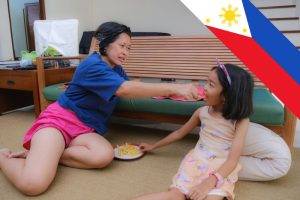Many Women aged between 50 and 79 face the discomfort of Pelvic Organ prolapse (POP), yet almost half remain silent due to the stigma surrounding such intimate conditions.
This silent ailment affects the ability of weakened pelvic floor muscles to support vital organs leading to distressing symptoms. We understand Pelvic Organ Prolapse with Dr Harvard Lin, a Consultant Obstetrician, Gynaecologist and Urogynaecologist from the Asian Obstetrics and Gynaecologic Centre (AOGC).
Understanding the Issue
Dr Lin explained the issue. He stated, “Pelvic organ prolapse refers to a condition where the pelvic floor muscles become weakened and are unable to adequately support organs such as the vagina, uterus, bladder, and rectum. When these muscles are damaged and/or lose their strength, the organs may descend, and in severe cases, protrude through the vaginal opening, causing a noticeable bulge.”
The Various Types and Stages of POP:
- Cystocele: Bladder’s descent into the vagina.
- Enterocele: Bulging of the small intestine into or out of the vagina.
- Rectocele: The rectum protrudes into or out of the vagina
- Uterine prolapse: Uterus’s descent into or out of the vagina
- Vaginal vault prolapse: Apex of vagina descends and protrudes out of the vagina.
Who’s at Risk
The risk factors for POP include vaginal childbirth, jobs involving extended standing or heavy lifting, straining due to constipation, chronic coughing, and menopause.
At-risk groups include women who have:
Vaginal childbirth: The process of vaginal childbirth can lead to irreversible damage to the pelvic floor. While multiple births may increase the risk of POP later in life, even women who have had only one child or delivered via C-section can experience prolapse.
Prolonged abdominal pressure: Occupations involving prolonged standing or heavy lifting, straining during bowel movements due to constipation, and chronic coughing can exert continuous pressure on the abdominal muscles and push pelvic organs through the vagina.
Menopause: Oestrogen plays a crucial role in maintaining the strength, health, and lubrication of pelvic tissues. Decreased oestrogen levels during menopause can result in thinner, drier, and less elastic vaginal muscles and tissues, making women more susceptible to prolapse as they age.
Recognising the Symptoms And Seeking Help
From mild dragging discomfort to tissues protruding out of the vagina, the symptoms of POP can be varied. Severe forms can result in recurrent urinary tract infections and kidney damage. Prompt diagnosis is crucial.
POP isn’t life-threatening, but it can drastically affect one’s quality of life. Many women delay medical consultation, dismissing it as a natural ageing process. But when symptoms like vaginal bulging, urinary difficulties, or recurring infections occur, it’s time to see a doctor.
Available Treatments
Non-invasive treatments include pelvic floor exercises and vaginal pessaries. The latter, made of materials like latex or silicone, provides internal support. There are many types of pessaries, but these two are the most common:
Ring pessary
This is often the first choice for clinicians due to its ease of insertion and removal. It is generally recommended for early-stage POP (Stages 1 and 2) but can be suitable for alldegrees of the condition.
Gellhorn pessary
The Gellhorn pessary is typically preferred for more advanced stages of prolapse or in patients who are no longer sexually active. It is difficult to install and remove and therefore, can only be inserted and expelled by a doctor or healthcare provider.
Dr Lin shared the drawbacks of pessaries. He stated,” While pessaries may be suited for those who are not ideal candidates for surgery or who want to avoid surgery, there are some drawbacks. For example, patients may find the treatment cumbersome, as they are expected to return to their healthcare providers every four to five months for maintenance, including vaginal examination and the removal, cleaning, and reinsertion of the pessary. Additionally, pessaries may not be able to effectively address advanced cases of prolapse where kidney damage has occurred or if the pelvic muscles are so weak the organs cannot even be adequately supported with external devices.”
Prevention Strategies
Dr Link suggested that active prevention is key. He stated, “I always recommend all women to practice Kegel exercise even before they start experiencing symptoms of POP. While Kegel exercises effectively strengthen the pelvic floor muscles, they only work when practised correctly. Here’s a step-by-step guide to performing Kegel exercises at home:
1) Locate your pelvic floor muscles by activating the muscles which stop the flow of urine or prevent the release of gas.
2) Tighten these muscles for 3 seconds, then relax for 3 seconds.
3) Do this ten times, twice a day.
In Conclusion
With Asia’s ageing population, the incidence of POP is set to rise. Awareness, early diagnosis, and the right treatment can significantly improve the quality of life for these women. We cannot stress enough the importance of shedding stigmas and openly discussing this medical issue.














